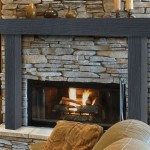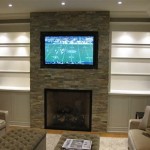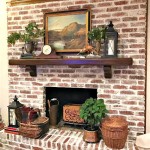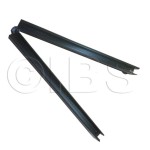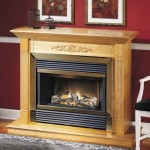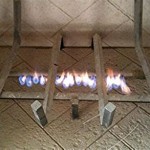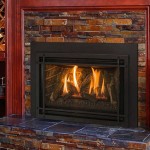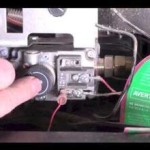Troubleshooting Gas Fireplace Wall Switch Issues
Gas fireplaces offer a convenient and aesthetically pleasing heating option for many homes. A key component of their functionality is the wall switch, which allows for easy on/off control of the fireplace. However, like any electrical component, the wall switch can malfunction, leading to frustration and a disruption in the fireplace's operation. This article provides a comprehensive guide to troubleshooting common gas fireplace wall switch problems, enabling homeowners to diagnose and potentially resolve these issues before seeking professional assistance.
Understanding the basic operation of the wall switch is crucial for effective troubleshooting. In most gas fireplace setups, the wall switch doesn't directly switch the gas supply. Instead, it controls a low-voltage circuit that signals the fireplace's control module to initiate the ignition sequence. This low-voltage circuit typically operates at 24 volts DC, powered by a transformer located within the fireplace unit. When the wall switch is turned on, it completes this circuit, sending a signal to the control module to start the pilot light and subsequently the main burner. When the switch is turned off, the circuit is broken, extinguishing the flame.
Before attempting any troubleshooting, it is essential to prioritize safety. Ensure the gas supply to the fireplace is turned off at the main shut-off valve. This valve is typically located near the fireplace itself or the gas meter. Allow the fireplace to cool completely before inspecting any components. Disconnecting the power to the fireplace at the breaker box adds another layer of safety, preventing accidental electrical shocks. If at any point during the troubleshooting process there is uncertainty or a lack of experience dealing with gas or electrical systems, it is strongly recommended to consult a qualified technician.
Identifying Common Wall Switch Problems
Several issues can cause a gas fireplace wall switch to malfunction. Identifying the specific problem is the first step in finding a solution. Common problems include a faulty switch, wiring issues, transformer problems, and control module malfunctions. Each of these will be addressed in detail.
Faulty Switch: The most straightforward issue is a malfunctioning switch itself. Over time, the internal contacts of the switch can become corroded, worn, or damaged, preventing them from properly completing the circuit. This can result in the fireplace failing to ignite when the switch is turned on, or intermittently turning off. A faulty switch might also exhibit physical signs of damage, such as cracks, broken levers, or loose connections.
Wiring Issues: Problems with the wiring connecting the switch to the fireplace are another common cause of malfunction. Loose connections, corroded wires, or damaged insulation can disrupt the flow of electricity, preventing the switch from functioning correctly. Wiring can also be damaged by rodents, accidental impacts, or simply deterioration over time. Short circuits within the wiring can also cause the fireplace to malfunction, and potentially damage other components.
Transformer Problems: The transformer is responsible for stepping down the household voltage (typically 120 volts AC) to the low voltage (24 volts DC) required by the control circuit. If the transformer fails, it will not be able to provide the necessary voltage, preventing the switch from operating correctly. Transformer failures can be caused by power surges, overheating, or simply reaching the end of their lifespan.
Control Module Malfunctions: While less common than switch or wiring problems, issues with the fireplace's control module can also manifest as wall switch malfunctions. The control module is the brain of the fireplace, responsible for interpreting the signal from the wall switch and initiating the ignition sequence. If the control module is faulty, it might not respond to the signal from the switch, even if the switch itself is working correctly. Control module failures can be caused by electrical surges, overheating, or internal component failures.
Troubleshooting Steps and Diagnostic Procedures
Once the potential causes of the wall switch malfunction have been identified, the next step is to perform specific diagnostic procedures to pinpoint the exact problem. These procedures involve visual inspections, electrical testing, and component replacements. Always remember to disconnect the power supply before performing any electrical work.
Visual Inspection: The first step is a thorough visual inspection of the wall switch, wiring, and surrounding components. Look for any signs of physical damage, such as cracks, broken levers, loose connections, or corroded wires. Pay close attention to the wiring connections at the switch and at the fireplace itself. Ensure that all connections are secure and free from corrosion. Check the transformer for any signs of overheating, such as discoloration or a burnt smell. Also, inspect the control module for any visible damage, such as bulging capacitors or burnt components.
Testing the Switch: The functionality of the wall switch can be tested using a multimeter. A multimeter is an electronic instrument used to measure voltage, current, and resistance. To test the switch, set the multimeter to the continuity setting (often indicated by a diode symbol or a sound). Disconnect the wires from the switch and place the multimeter probes on the switch terminals. When the switch is in the "off" position, the multimeter should indicate an open circuit (no continuity). When the switch is in the "on" position, the multimeter should indicate a closed circuit (continuity). If the switch fails this test, it needs to be replaced.
Testing the Wiring: Testing the wiring involves checking for continuity and shorts. Disconnect the wires from both the switch and the fireplace control module. Use a multimeter set to the continuity setting to check the continuity of each wire. The multimeter should indicate continuity between the two ends of each wire. If there is no continuity, the wire is broken and needs to be replaced. To check for shorts, set the multimeter to the resistance setting (typically the highest ohms range). Place one probe on one of the wires and the other probe on a grounded metal surface (such as a metal conduit or the fireplace frame). The multimeter should indicate infinite resistance (no connection). If the multimeter indicates low resistance, there is a short circuit between the wire and ground, and the wiring needs to be inspected and repaired.
Testing the Transformer: Testing the transformer requires measuring the output voltage. Ensure the fireplace is connected to its power source. Use a multimeter set to the AC voltage range to measure the voltage at the transformer's input terminals (typically 120 volts AC). Then, use a multimeter set to the DC voltage range to measure the voltage at the transformer's output terminals (typically 24 volts DC). If the input voltage is correct but the output voltage is low or non-existent, the transformer is likely faulty and needs to be replaced. It’s crucial to exercise extreme caution when working with live voltage. If unsure, consult a professional.
Testing the Control Module: Testing the control module requires specialized knowledge and equipment, and is generally best left to a qualified technician. However, some basic checks can be performed. Ensure that the control module is receiving power (typically 24 volts DC) from the transformer. Check the connections between the control module and the wall switch. If all connections are secure and the control module is receiving power, but the fireplace still does not ignite when the switch is turned on, the control module is likely faulty and needs to be replaced.
Repair and Replacement Procedures
After identifying the faulty component, the next step is to repair or replace it. Simple repairs such as tightening loose connections or cleaning corroded wires can often resolve minor issues. However, more complex problems, such as a faulty switch, transformer, or control module, will likely require replacement.
Replacing the Wall Switch: Replacing the wall switch is a relatively straightforward process. First, turn off the power to the fireplace at the breaker box. Remove the faceplate of the wall switch and disconnect the wires from the old switch. Connect the wires to the new switch, ensuring that the connections are secure. Replace the faceplate and turn the power back on at the breaker box. Test the new switch to ensure that it is functioning correctly.
Repairing or Replacing Wiring: Damaged wiring can be repaired by splicing in new sections of wire. Use wire connectors to ensure secure and insulated connections. However, if the wiring is severely damaged, it is best to replace the entire run of wire. When replacing wiring, use wire of the same gauge and type as the original wiring. Route the new wiring carefully, avoiding sharp bends or areas where it could be exposed to damage.
Replacing the Transformer: Replacing the transformer involves disconnecting the old transformer and connecting the new one. Turn off the power to the fireplace at the breaker box. Disconnect the wires from the old transformer, noting their locations. Connect the wires to the new transformer, ensuring that the connections are secure and that the polarity is correct. Secure the new transformer in place and turn the power back on at the breaker box. Test the new transformer to ensure that it is providing the correct voltage.
Replacing the Control Module: Replacing the control module is a more complex task that is generally best left to a qualified technician. The control module contains sensitive electronic components, and incorrect handling can damage it or other components of the fireplace. If replacing the control module yourself, carefully follow the manufacturer's instructions. Disconnect the power to the fireplace at the breaker box. Disconnect the wires from the old control module, noting their locations. Connect the wires to the new control module, ensuring that the connections are secure and that the polarity is correct. Secure the new control module in place and turn the power back on at the breaker box. Test the new control module to ensure that it is functioning correctly.
After performing any repairs or replacements, thoroughly test the fireplace to ensure that it is functioning correctly. Verify that the wall switch turns the fireplace on and off reliably, and that the flame is burning properly. If any problems persist, consult a qualified technician for further assistance.

Gas Fireplace Wall Switch Faq Montigo

The Main Burner Flame Will Not Come On Or Stay Www Mygasfireplacerepair Com

Gas Fireplace Switch Won T Work 5 Key Reasons Solutions
Why Would A Built In Gas Fireplace With Wall Switch Not Be Working Quora

What To Do When Your Gas Fireplace Wall Switch Isn T Working Dreifuss Fireplaces
Why Would A Built In Gas Fireplace With Wall Switch Not Be Working Quora

Gas Fireplace Switch Won T Work 5 Key Reasons Solutions

How To Test Your Thermopile Www Mygasfireplacerepair Com
Wall Switch Fails To Do Anything On Heat N Glo Fireplace Hearth Com Forums Home

Need Help With My Fireplace Projects Stories Smartthings Community

